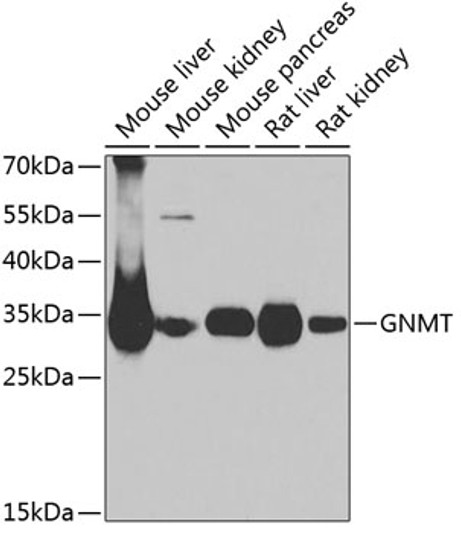| Tissue Specificity | Expressed at moderate levels in most tissues analyzed, including heart, brain, placenta, lung, skeletal muscle, kidney and pancreas. |
| Post Translational Modifications | Acetylation at Lys-680 by KAT8/MOF promotes its dissociation from pRNA, affecting heterochromatin formation, nucleosome positioning and rDNA silencing. Deacetylation by SIRT1 in late S phase enhances pRNA-binding, allowing de novo DNA methylation and heterochromatin formation. Acetylation is high during S phase and declines to background levels in late S phase when the silent copies of rRNA genes are replicated. Ubiquitinated. Deubiquitinated by USP21 leading to its stabilization. |
| Function | Regulatory subunit of the ATP-dependent NoRC-1 and NoRC-5 ISWI chromatin remodeling complexes, which form ordered nucleosome arrays on chromatin and facilitate access to DNA during DNA-templated processes such as DNA replication, transcription, and repair. Both complexes regulate the spacing of nucleosomes along the chromatin and have the ability to slide mononucleosomes to the center of a DNA template. Directly stimulates the ATPase activity of SMARCA5 in the NoRC-5 ISWI chromatin remodeling complex. The NoRC-1 ISWI chromatin remodeling complex has a lower ATP hydrolysis rate than the NoRC-5 ISWI chromatin remodeling complex. Within the NoRC-5 ISWI chromatin remodeling complex, mediates silencing of a fraction of rDNA by recruiting histone-modifying enzymes and DNA methyltransferases, leading to heterochromatin formation and transcriptional silencing. In the complex, it plays a central role by being recruited to rDNA and by targeting chromatin modifying enzymes such as HDAC1, leading to repress RNA polymerase I transcription. Recruited to rDNA via its interaction with TTF1 and its ability to recognize and bind histone H4 acetylated on 'Lys-16' (H4K16ac), leading to deacetylation of H4K5ac, H4K8ac, H4K12ac but not H4K16ac. Specifically binds pRNAs, 150-250 nucleotide RNAs that are complementary in sequence to the rDNA promoter.pRNA-binding is required for heterochromatin formation and rDNA silencing. |
| Protein Name | Bromodomain Adjacent To Zinc Finger Domain Protein 2aTranscription Termination Factor I-Interacting Protein 5Ttf-I-Interacting Protein 5Tip5Hwalp3 |
| Database Links | Reactome: R-HSA-427413 |
| Cellular Localisation | NucleusNucleolusColocalizes With The Basal Rna Polymerase I Transcription Factor Ubf In The Nucleolus |
| Alternative Antibody Names | Anti-Bromodomain Adjacent To Zinc Finger Domain Protein 2a antibodyAnti-Transcription Termination Factor I-Interacting Protein 5 antibodyAnti-Ttf-I-Interacting Protein 5 antibodyAnti-Tip5 antibodyAnti-Hwalp3 antibodyAnti-BAZ2A antibodyAnti-KIAA0314 antibodyAnti-TIP5 antibody |
Information sourced from Uniprot.org













